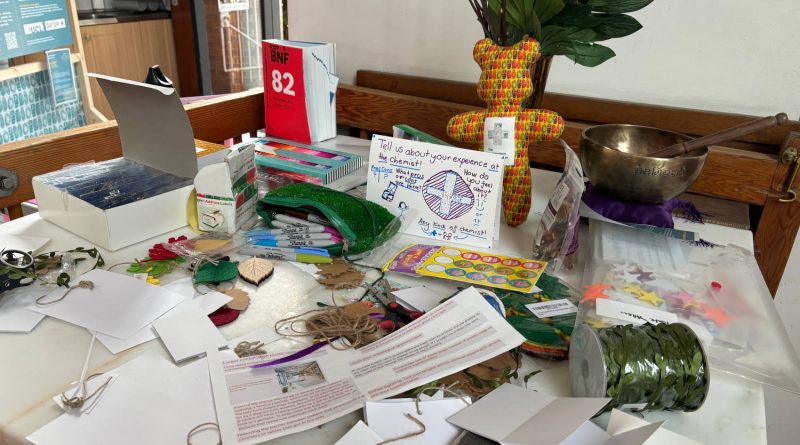Architecture of Pharmacies exhibition is not prescriptive about health
A new display at the Bromley-by-Bow Centre connects physical space to well-being and invites you to reimagine health from the outside in.
The Bromley-by-Bow Centre (BBBC) has opened a new exhibition on the Architecture of Pharmacies in collaboration with University College London (UCL). It shines a light on the community pharmacy, a space few of us want to spend time which is central to our health system.
The exhibition is part of the London Festival of Architecture, making the BBBC the first community health centre to be included in the month-long celebration of city spaces.
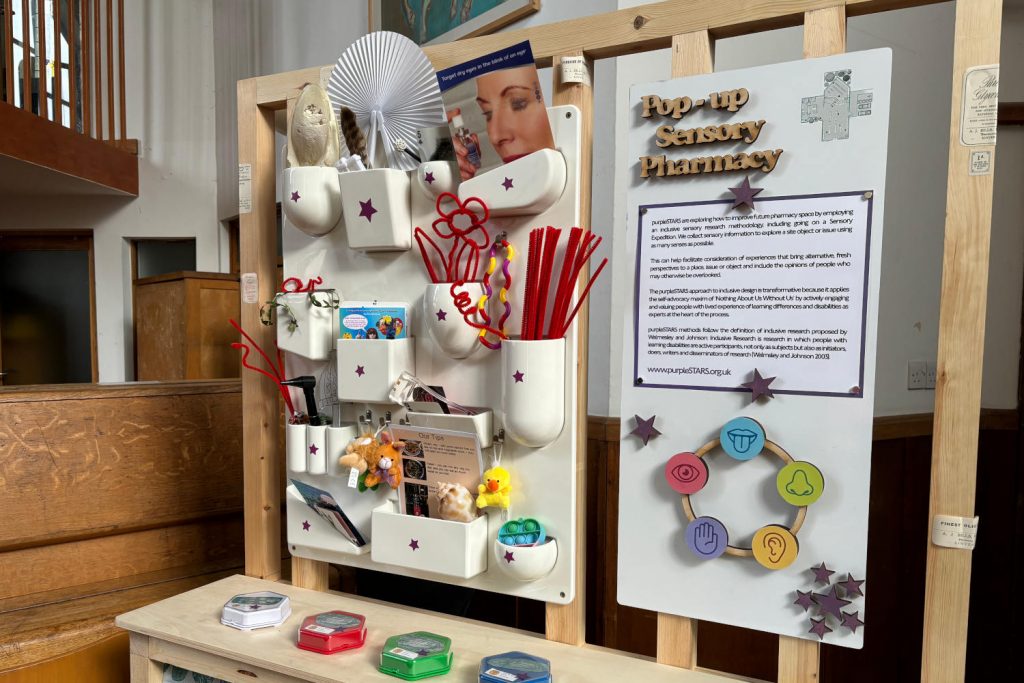
Entering the BBBC’s reception area, you immediately feel the sense of warmth absent in most healthcare – and museum – spaces. Wooden counters line the perimeter of the room, and comfortable chairs invite you to linger as you drift between the display boards. You can even make yourself a cup of tea or coffee at the free beverage station.
The lighting is soft and the gentle background noise of staff going about their day puts you at ease. This exhibition space is an antidote to the sterile pharmacy, modelling how public spaces can be communal living rooms.
This child-friendly exhibition includes colourful objects such as 3D-printed anatomical models and sensory details. You can press buttons to play sounds or help yourself to the lollipops on display. The tone is playful and curious, as it invites you to imagine what going to the pharmacy could feel like.
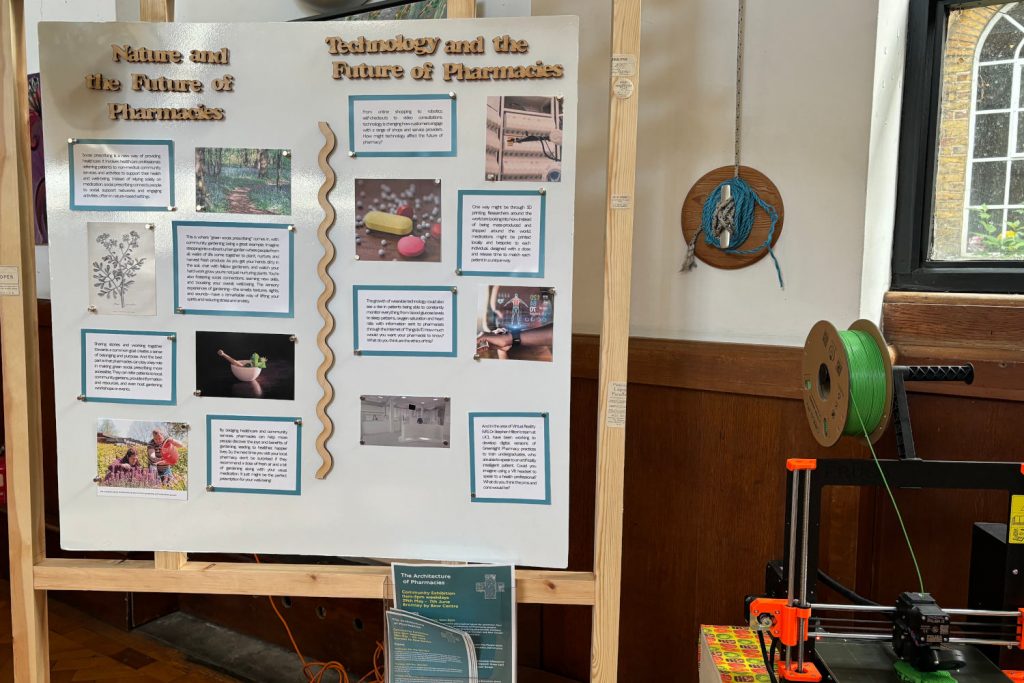
A collection of archival photographs recalls days past when a trip to the apothecary was also an encounter with jars of herbal remedies and charming soda machines.
Pointing to advances in public space design and self-checkout in shops, the exhibit leaves you wondering why pharmacies have failed to evolve alongside other services. It questions how nature and technology could become part of the pharmacy’s future.
Visitors should know that this exhibit is more about imagination than explanation. It asks you to reconsider what community health spaces could become, rather than prescribing an ideal vision.
Dr Ranjita Dhital is a trained pharmacist leading UCL’s research on pharmacy architecture. In her introduction to the exhibition, she said:
‘Our health system focuses on cure much more than prevention. We have started thinking about the design of hospitals, but not pharmacies. We don’t know what the optimum looks like.
The exhibit features children’s drawings with ideas for improving the humble pharmacy. It also includes blank pages for visitors to conjure up their pharmacies of the future, which Dr Dhital says the research team will collect for review when the exhibit closes.
Though its primary aim is to spark rather than prescribe ideas, the project highlights improvements some pharmacies have already made.
There is a photo display of local artist Samantha Walker visiting Tower Pharmacy in Wapping. She points out better lighting, artwork and reconfigurations which have made the space more inviting for patients with disabilities. Adding a consultation area has also allowed the pharmacy to offer injections previously only available from GP surgeries.
Walker is a member of purpleSTARS, a non-profit research team which includes people with and without learning disabilities, co-designing exhibitions. She created an original print based on medication packaging. The design features on fabric covers throughout the exhibit.
‘It’s the first time someone has taken my art seriously,’ she said. ‘I’m glad it’s being put to good use.’
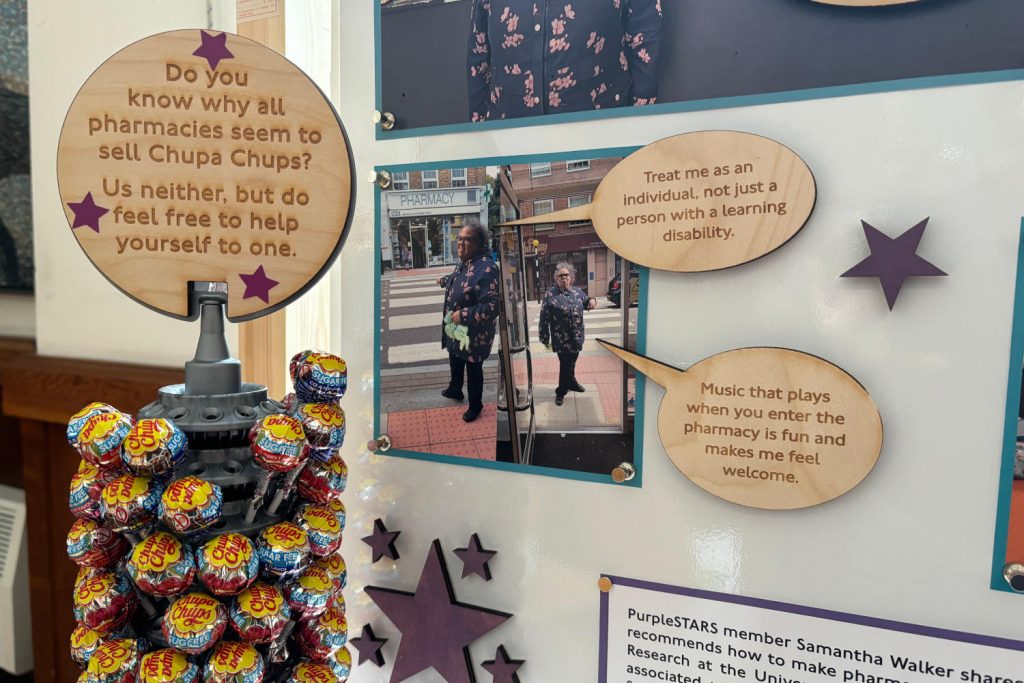
Government funding for better pharmacies may not be imminent but this display highlights how communities can demand better services.
And for the sceptics to whom all this might sound idealistic, there are real consequences to neglecting pharmacies. They are one of the most accessible resources to many people struggling with physical and mental health. Improved communication helps people manage conditions before they become unmanageable, which lessens the strain on other areas of the NHS.
Amandeep Doll is Head of Professional Belonging at the Royal Pharmaceutical Society and a collaborator on the project. She highlighted that many people go to pharmacists to seek help with sensitive issues. Alongside the pharmacist, the pharmacy itself – how welcoming it is, how well it accommodates conversation – can determine whether patients seek help with mental illness, contraception, sexual health and intimate partner violence.
The exhibition organisers want people to take their community health spaces seriously. If pharmacies adapt to local needs, they can become community hubs. This would support the unique social prescribing model which the BBBC has pioneered.
Perhaps the most important reason to visit this exhibit is to be part of the two-way discussion which the team behind it are so keen to spark.
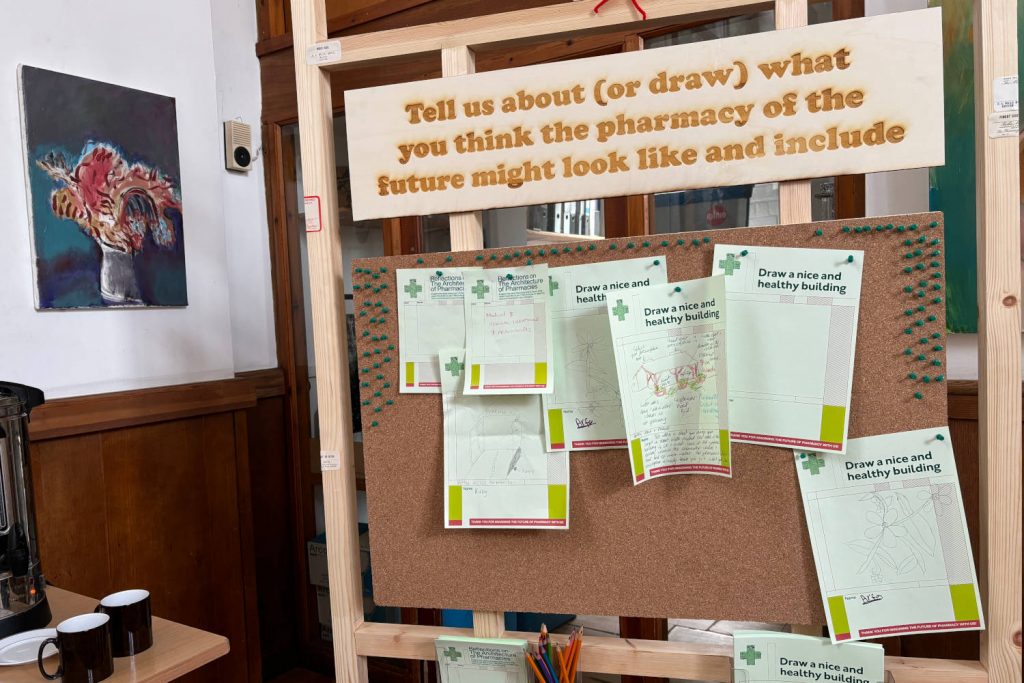
The Architecture of Pharmacies is on display at the Bromley-by-Bow Centre until 7 June. Panel discussions about the exhibition will take place on 3 and 6 June. More information can be found at www.bbbc.org.uk.
UCL’s ‘Creative Review of Pharmacies’ will be published by September 2024. Updates are available at www.architectureofpharmacies.com.
If you enjoyed this article, you may like: Prescribing joy: Social prescribing and the future of community health in Tower Hamlets

